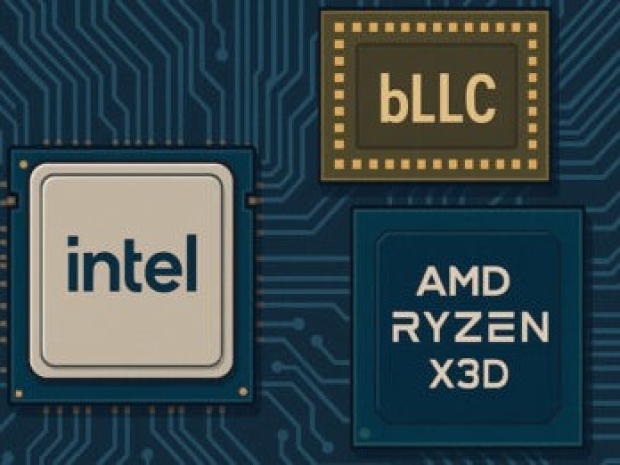According to leaker @Haze2K1, at least two chips in the Nova Lake-S lineup will carry this cache-heavy configuration, in a clear shot across the bow at AMD’s dominant 3D V-Cache offerings.
AMD’s X3D chips have been the go-to choice for enthusiast gamers since 2022, thanks to their extra-stacked cache and the frame rate boosts it delivers. Intel, after years of dithering, now looks to be cobbling together something similar.
According to Techspot the leaked Nova Lake SKUs are reported to feature eight performance cores and four low-power LP-E cores, with one version including 20 efficiency cores and the other featuring 12. Both models are expected to sit at the familiar 125 W TDP, keeping them within the same power envelope as Intel’s current gaming parts.
What’s interesting is that Intel’s bLLC isn’t entirely new. The design is already in use in its Clearwater Forest server processors, where the cache lives on a base tile underneath the active tiles. That layout avoids some of the thermal mess that plagued earlier AMD designs, which stacked cache on top of CPU dies and throttled performance under load.
AMD’s current 9000-series X3D chips fixed those problems by moving the V-Cache underneath the dies, and this is the same structural idea Intel is nicking. The irony is that just months ago, Intel swore off plans to bring anything like 3D V-Cache to desktops.
In November 2024, Intel tech comms manager Florian Maislinger told YouTubers der8auer and Bens Hardware that no such move was on the cards.
Yet here we are.
Nova Lake-S is set for launch in late 2026 or early 2027 and will debut on the new LGA 1954 socket. The range will reportedly feature at least six models, from the flagship Core Ultra 9 485K with 52 cores and a 150 W TDP, all the way down to a 12-core Core Ultra 3 415K with a 125 W TDP.
If Intel’s bLLC plays out as expected, it might finally offer a credible gaming challenge to AMD’s stacked cache juggernauts, without cooking the silicon in the process.

